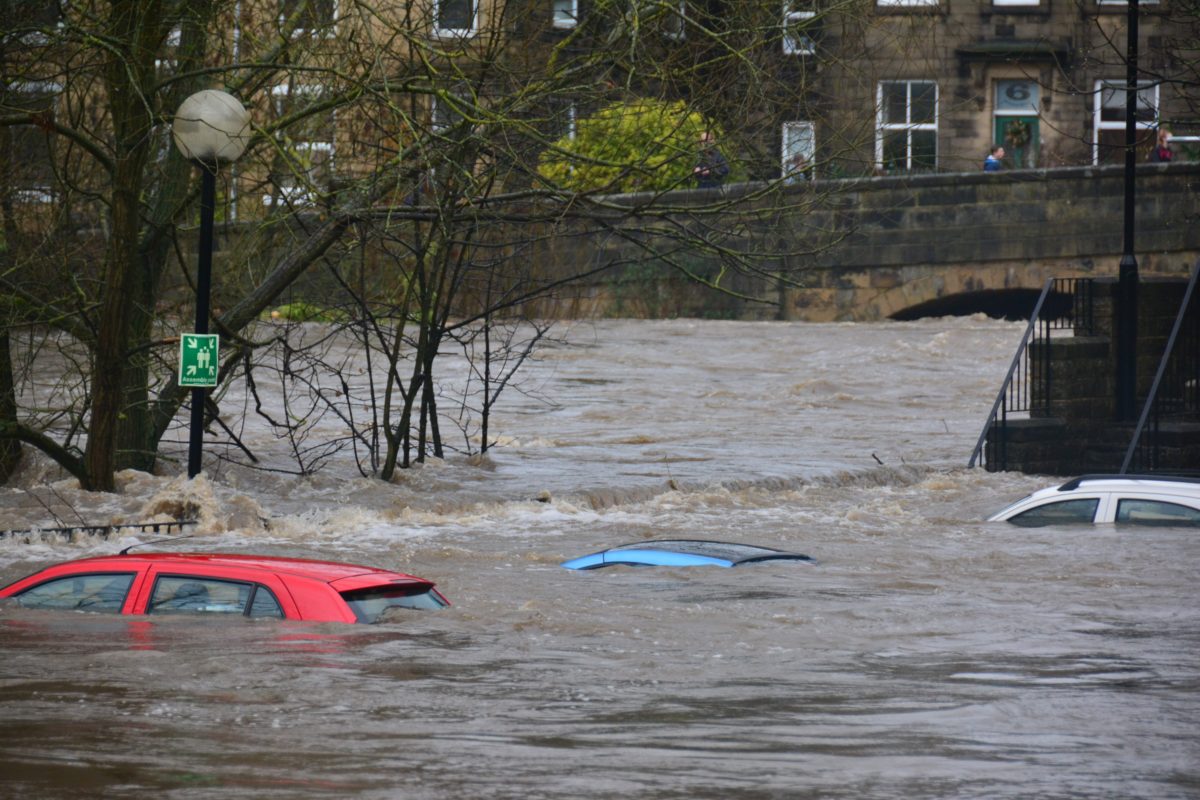Types of Flood Risks
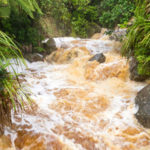 Heavy rains and upstream snowmelt often create floods due to the rapid accumulation of surface water. This water can cause fast-moving water, resulting in “flash floods.” Flash floods can clog waterways, over-top levees and swamp runoff systems with the result being unanticipated high water which can create a lot of damage and wash away anything not well secured.
Heavy rains and upstream snowmelt often create floods due to the rapid accumulation of surface water. This water can cause fast-moving water, resulting in “flash floods.” Flash floods can clog waterways, over-top levees and swamp runoff systems with the result being unanticipated high water which can create a lot of damage and wash away anything not well secured.
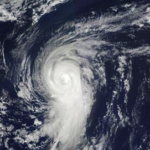 Hurricanes are one of the most dangerous and destructive forces that consistently damage sections of the United States. A hurricane is defined as a severe tropical storm or cyclone that commonly forms in the southern Atlantic Ocean, Caribbean Sea, Gulf of Mexico, and the eastern Pacific Ocean. Hurricanes produce heavy winds that can exceed 155 miles per hour and are characteristically known to create floods and destructive flying debris that can result in catastrophic damage – from coastlines to communities hundreds of miles inland. Additionally, storm surges along the coast and slow moving mountainous hurricanes can result in dangerously heavy rainfall. Other effects of heavy rainfall produced by hurricanes include landslides, mudslides, and flash floods. Atlantic hurricane season: June to November (peaking between mid-August to late October). Eastern Pacific hurricane season: May 15 to November 30.
Hurricanes are one of the most dangerous and destructive forces that consistently damage sections of the United States. A hurricane is defined as a severe tropical storm or cyclone that commonly forms in the southern Atlantic Ocean, Caribbean Sea, Gulf of Mexico, and the eastern Pacific Ocean. Hurricanes produce heavy winds that can exceed 155 miles per hour and are characteristically known to create floods and destructive flying debris that can result in catastrophic damage – from coastlines to communities hundreds of miles inland. Additionally, storm surges along the coast and slow moving mountainous hurricanes can result in dangerously heavy rainfall. Other effects of heavy rainfall produced by hurricanes include landslides, mudslides, and flash floods. Atlantic hurricane season: June to November (peaking between mid-August to late October). Eastern Pacific hurricane season: May 15 to November 30.
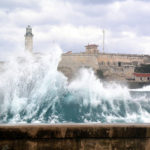 The United States is bound by oceans, seas and other large bodies of water that create naturally occurring weather conditions that can create risk for those living near these bodies of water. Wind and other events often cause ocean water to overflow. When this happens, flooding on the shores occurs. Ocean or large lake storms can dump lots of water on a coast, raising the sea level in that area. These are known as storm surges, and the cause of what we refer to as coastal flooding. Coastal flooding usually occurs as a result of severe storms, either tropical or winter storms.
The United States is bound by oceans, seas and other large bodies of water that create naturally occurring weather conditions that can create risk for those living near these bodies of water. Wind and other events often cause ocean water to overflow. When this happens, flooding on the shores occurs. Ocean or large lake storms can dump lots of water on a coast, raising the sea level in that area. These are known as storm surges, and the cause of what we refer to as coastal flooding. Coastal flooding usually occurs as a result of severe storms, either tropical or winter storms.
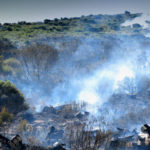 The increasing frequency of catastrophic wildfires in the western United States and elsewhere has increased the need to understand the flooding risk from storm erosion of those burned watershed areas. Surface water flowing from burned areas may carry increased levels of sediment, organic debris, and chemicals that may contribute to significant contamination of municipal water supplies and aquatic habitats. Wildfire will often damage the ability of the remaining plant life to capture and hold rain as it falls, which can create mud-slides, damaging erosion, and more intense flooding and debris flow downstream. The result is that even normally occurring seasonal storms can create flooding when the surface the rain is hitting has been damaged by fire to the point that the ecosystem cannot hold or slow runoff.
The increasing frequency of catastrophic wildfires in the western United States and elsewhere has increased the need to understand the flooding risk from storm erosion of those burned watershed areas. Surface water flowing from burned areas may carry increased levels of sediment, organic debris, and chemicals that may contribute to significant contamination of municipal water supplies and aquatic habitats. Wildfire will often damage the ability of the remaining plant life to capture and hold rain as it falls, which can create mud-slides, damaging erosion, and more intense flooding and debris flow downstream. The result is that even normally occurring seasonal storms can create flooding when the surface the rain is hitting has been damaged by fire to the point that the ecosystem cannot hold or slow runoff.
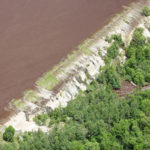 Levees are man-made ridges that are typically built parallel to a river or other body of water. Levees are created to provide protection from hurricanes, storms, and other floods. While the idea may seem logical, levees pose significant and potentially dangerous flood problems for many communities. Among other difficulties, levees often stand in the way of waterways and communities and have been proven to often create flood risks by causing greater development in floodplains. The performance levels of levees across the United States in unknown. Because of this lack of data, there is (and likely cannot be) accurate information about the conditions of levees nationwide – or on their ability to perform effectively.
Levees are man-made ridges that are typically built parallel to a river or other body of water. Levees are created to provide protection from hurricanes, storms, and other floods. While the idea may seem logical, levees pose significant and potentially dangerous flood problems for many communities. Among other difficulties, levees often stand in the way of waterways and communities and have been proven to often create flood risks by causing greater development in floodplains. The performance levels of levees across the United States in unknown. Because of this lack of data, there is (and likely cannot be) accurate information about the conditions of levees nationwide – or on their ability to perform effectively.
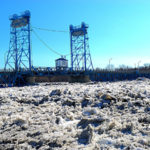 Flooding caused by ice jams is similar to flash flooding. An ice dam formation creates a blockage and causes water to quickly rise at the point of the jam and upstream. When the ice jam eventually breaks it results in The inevitable failure of the jam results in flooding downstream. Another hazard associated with flooding from ice jam is is floating ice masses which can damage structures, riverbanks, and landscape as the flood waters move downstream. If you live in an area known to have ice dams, be aware of the seasonal temperatures and forecast.
Flooding caused by ice jams is similar to flash flooding. An ice dam formation creates a blockage and causes water to quickly rise at the point of the jam and upstream. When the ice jam eventually breaks it results in The inevitable failure of the jam results in flooding downstream. Another hazard associated with flooding from ice jam is is floating ice masses which can damage structures, riverbanks, and landscape as the flood waters move downstream. If you live in an area known to have ice dams, be aware of the seasonal temperatures and forecast.
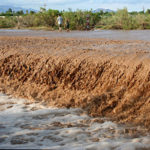 Both mudflows and mudfloods start with a mixture of moving water and a stationary mass of saturated soil. When the mixture gets wet enough, it begins to move as a mass, either as a result of gravity or when triggered by an earthquake or sudden flow of debris laden water. Mudflows and mudfloods may cause more severe damage than clear water flooding due to the force of the debris-filled water and the combination of debris and sediment. The force of the water often destroys pilings as well as structures in its path. Mud and debris may also fill drainage channels and sediment basins, causing flood water to suddenly inundate areas outside of the normal floodplain. Both types of disasters are often the result of rain falling on terrain that has been laid bare from forest fires, brush fires, or urbanization, and so they cannot absorb or soak up runoff. In areas where ground cover has been removed, even small rains can cause mudflows and mudfloods.
Both mudflows and mudfloods start with a mixture of moving water and a stationary mass of saturated soil. When the mixture gets wet enough, it begins to move as a mass, either as a result of gravity or when triggered by an earthquake or sudden flow of debris laden water. Mudflows and mudfloods may cause more severe damage than clear water flooding due to the force of the debris-filled water and the combination of debris and sediment. The force of the water often destroys pilings as well as structures in its path. Mud and debris may also fill drainage channels and sediment basins, causing flood water to suddenly inundate areas outside of the normal floodplain. Both types of disasters are often the result of rain falling on terrain that has been laid bare from forest fires, brush fires, or urbanization, and so they cannot absorb or soak up runoff. In areas where ground cover has been removed, even small rains can cause mudflows and mudfloods.

